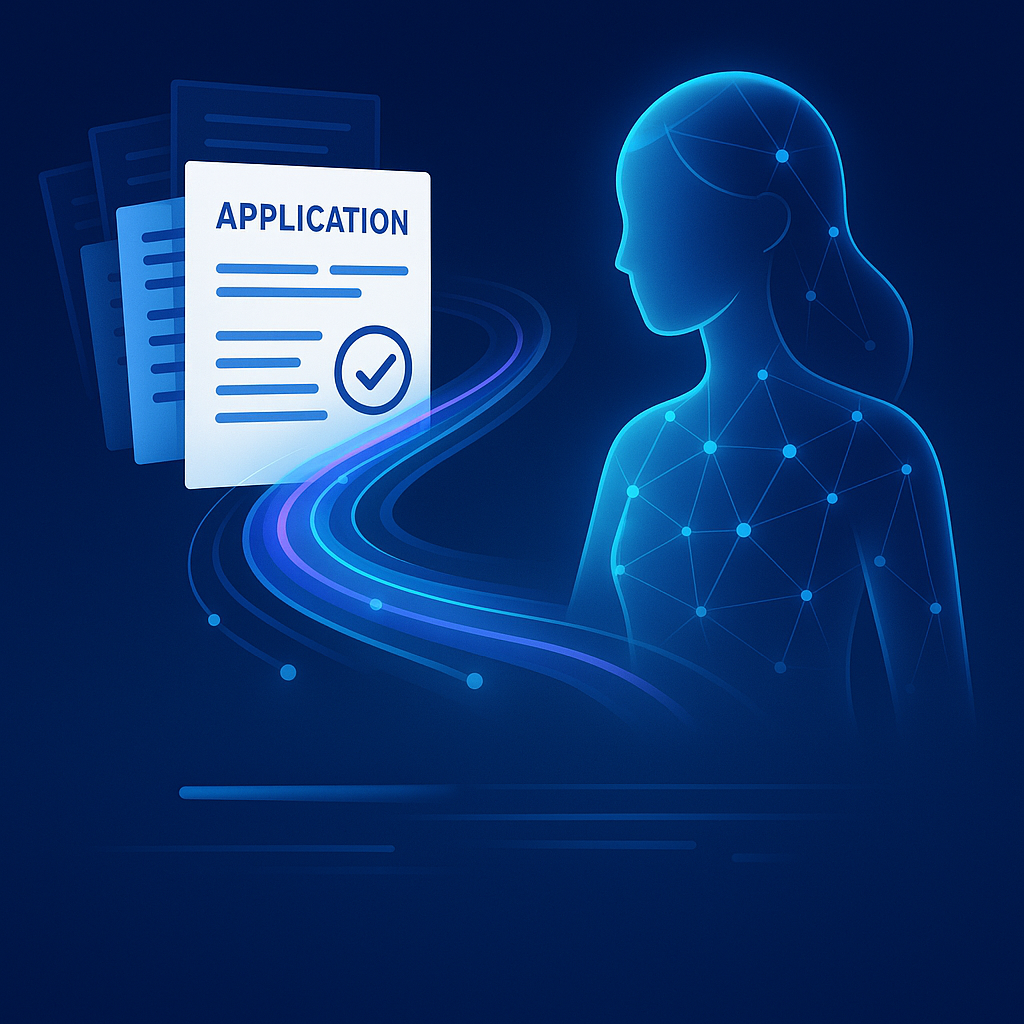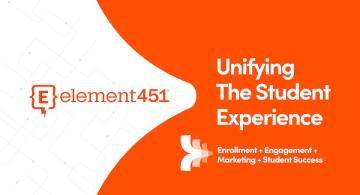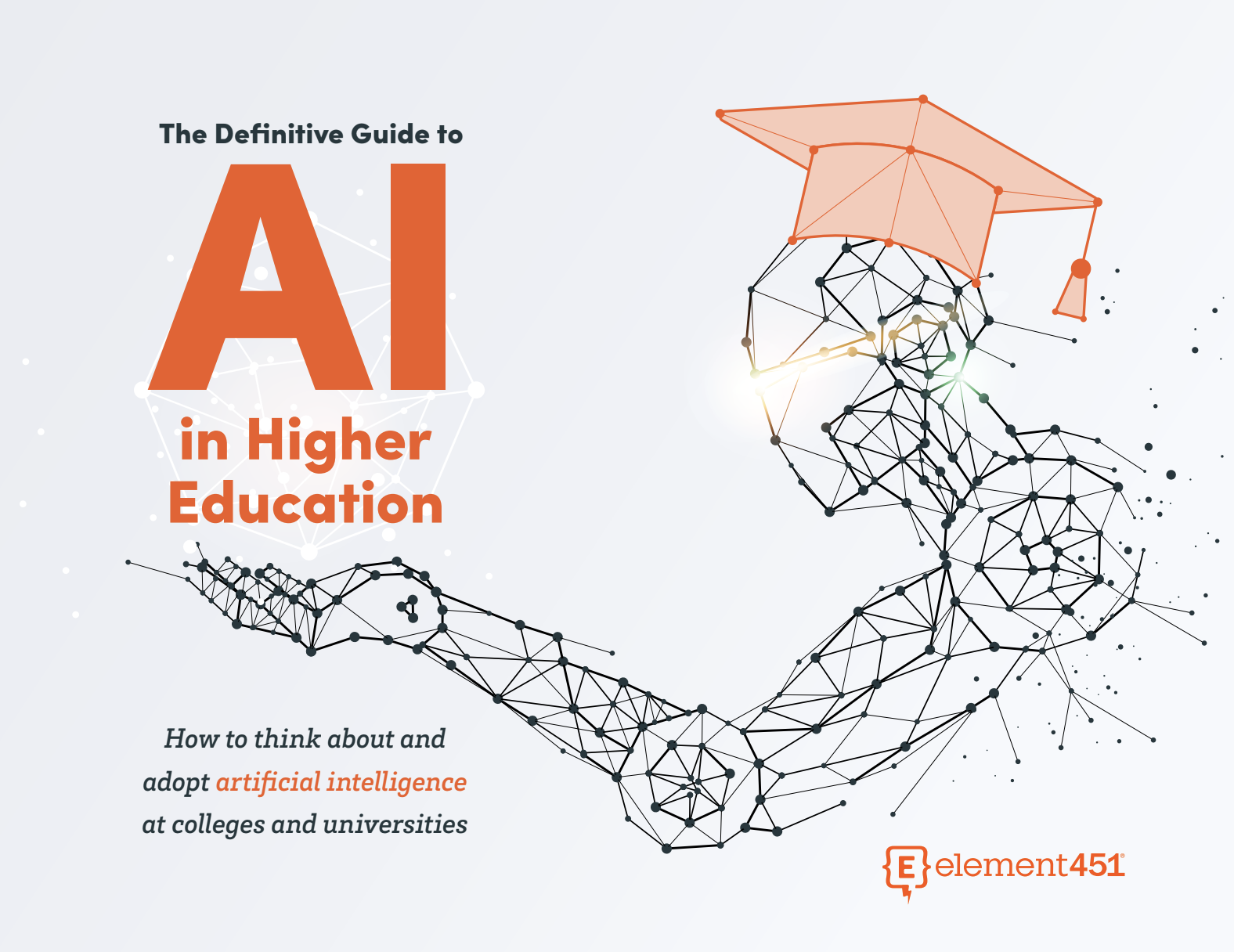AI Agents in Admissions: Streamlining Application Completion and Scoring
by Erin Newton · Updated Sep 05, 2025

Are there AI agents that can help review and score higher-ed applications?
Yes. Admissions teams are already using agents to read, score, and triage applications—freeing staff to focus on nuanced, human decisions. Agents don’t just log data like old CRMs; they complete missing-materials checks, validate transcripts, and pre-score applications against customizable rubrics.
The result: faster reviews, fairer outcomes, and fewer bottlenecks, with humans always making the final call.
Introduction: The Pressure Cooker of Modern Admissions
Picture an admissions office in January. Deadlines stack up, files pour in, and a few missing documents can stall an otherwise qualified applicant. Behind the scenes, counselors juggle verification, triage, and long days—while trying to keep every decision consistent and on time.
That strain isn’t just anecdote; enrollment leaders have been public about morale, turnover, and hiring constraints that make it harder to sustain stable teams.
Why Now? The Shift Toward AI in Admissions
Applications are up; teams aren’t.
Common App’s latest end-of-season report shows 1,498,199 distinct first-year applicants (+5% YoY) submitted 10,193,579 applications (+8% YoY)—the first time the platform has crossed 10 million apps. That volume shows no sign of slowing. When your inputs grow faster than your headcount, the only way to protect quality is to redesign the first read for speed and consistency.
At the same time, budget pressure and hiring freezes have left many offices with less wiggle room to “staff up” for peak season. That makes agentic AI—systems that can analyze evidence, apply your rubric, and log rationales—especially timely.
Admissions Without AI Support: The Pain Is Real
- Application completion delays. Files stall when transcripts, essays, or recommendations don’t arrive.
- Inconsistent first reads. Different reviewers apply rubrics differently; fatigue sets in late in the day.
- Slower cycle time, lower yield. Delayed decisions frustrate students and push them toward faster-moving competitors.
- Team burnout. Too much time is spent chasing paperwork rather than exercising human judgment.
(If this sounds familiar, you’re not alone.)
How AI Agents Streamline Admissions Completion and Scoring
1) Application completion & materials tracking
- Flag missing components in real time (transcripts, test scores, recommendations).
- Validate document formats and check against program requirements.
- Auto-nudge applicants with clear, personalized reminders.
Outcome: fewer stalled files, faster throughput, and less administrative drag.
2) Intelligent scoring & review triage
- Apply your rubric (criteria, weights, thresholds) consistently—every time.
- Generate a concise scorecard with per-criterion rationale, so reviewers see why a file was scored that way.
- Route edge cases for human review; surface the strongest fits first.
Outcome: more consistent decisions and cleaner handoffs into committee.
3) Risk & quality checks (pre-review)
- Flag anomalies or potential fraud signals before anyone spends time reading.
- Preserve an audit trail of what was flagged and why.
Outcome: protects staff time and institutional aid dollars while keeping humans in control.
Examples of AI Agents Supporting Admissions
- Element451 Bolt Admissions Agents. Agents perform rubric-based first reads with human-readable rationales, flag risk indicators, and route second reads—minutes-level first reads, with published pilots showing 94% model-to-human agreement and 186 fraudulent applications flagged in a week. (For more, read the case study on Kellogg Community College).
- Slate. Predictive models that help prioritize applications and guide enrollment strategies.
- CollegeNET. Process automation for document verification and applicant communications.
- Interfolio. Dossier and recommendation letter management to ensure completeness.
Together these demonstrate a growing category of AI-powered admissions support: extend capacity without sacrificing standards—and make the student experience smoother, too.
Frequently Asked Questions (FAQ)
Will AI agents replace admissions staff?
Do we need our SIS to start?
How do agents reduce bias?
What about privacy and compliance?
Can AI agents adapt to unique admissions priorities?
The Future of AI in Admissions: What’s Next
Expect agents to keep expanding their assistive scope while staying under human oversight: from fraud detection, to committee-ready summaries, to adaptive triage mid-cycle as patterns emerge. If you want a deeper operational walk-through, the Application First-Read playbook outlines how schools configure criteria, train the App Reader, and measure agreement before scaling.
Conclusion: A Smarter Path Forward
Application growth isn’t slowing, and teams can’t hire their way out. AI agents help admissions absorb volume by standardizing first reads and elevating human judgment. With a clear rubric, rationale outputs, and governance, you’ll deliver faster, fairer decisions—and a calmer cycle for staff and students alike.
AI Admissions by the Numbers
- 10.19M applications and 1.50M applicants on Common App in 2024–25—+8% and +5% YoY, respectively. Common App
- Minutes-level first reads, 94% model-to-human agreement, 186 fraud apps flagged in one week (Kellogg CC case).
- Staff strain & hiring constraints continue to pressure operations—another reason to modernize the first read rather than add headcount. Inside Higher Ed

About Element451
Boost enrollment, improve engagement, and support students with an AI workforce built for higher ed. Element451 makes personalization scalable and success repeatable.
Categories
New Blog Posts

The Definitive Guide
AI in Higher Education
Bridge the gap between the latest tech advancements and your institution's success.
Useful Links
Related Articles

Talk With Us
Element451 is the only AI Workforce Platform for higher education. Our friendly experts are here to help you explore how Element451 can improve outcomes for your school.
Get a Demo








